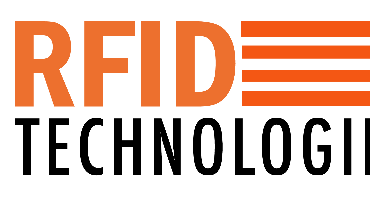.png) ation (RFID) systems can be broken down by the frequency band within which they operate, there is low frequency (LF), high frequency (HF) and ultra-high frequency (UHF).
ation (RFID) systems can be broken down by the frequency band within which they operate, there is low frequency (LF), high frequency (HF) and ultra-high frequency (UHF).There are also two broad categories of systems—passive and active RFID. This article discusses only the passive RFID systems solutions & frequencies. ( LF, HF & UHF )
RFID systems are often categorized by their operating frequency band. Frequency refers to the size of the radio waves used to communicate between system components. RFID systems throughout the world operate in low frequency (LF), high frequency (HF), and ultra-high frequency (UHF) bands. Radio waves behave differently at each of these frequencies and there are advantages and disadvantages associated with using each frequency band.
For example, if an RFID system operates at a lower frequency, it has a slower data read rate, but increased capabilities for reading near or on metal or liquid surfaces. If a system operates at a higher frequency, it generally has faster data transfer rates and longer read ranges, but more sensitivity to radio wave interference caused by liquids and metals in the environment. However technology innovations in recent years have made it possible to use
ultra-high frequency RFID systems around liquids and metals.
Low Frequency (LF) RFID - The LF band covers frequencies from 30 KHz to 300 KHz. Typically LF RFID systems operate at 125 KHz, although there are some that operate at 134 KHz. This frequency band provides a short read range of 10 cm, and has slower read speed than the higher frequencies, but is not very sensitive to radio wave interference. LF RFID applications include access control and livestock tracking. Standards for LF animal-tracking systems are defined in ISO 14223, and ISO/IEC 18000-2. The LF spectrum is not considered a truly global application because of slight differences in frequency and power levels throughout the world.
High-Frequency (HF) RFID - The HF band ranges from 3.0 to 30MHz. Most HF RFID systems operate at 13.56 MHz with read ranges between 10 cm and upto 1.0 meter. HF systems experience moderate sensitivity to interference. HF RFID is commonly used for ticketing, payment and data transfer applications. There are several HF RFID standards in place, such as the ISO 15693 standard for tracking items and the ECMA-340 and ISO/IEC 18092 standards for Near Field Communication (NFC), a short range technology that is commonly used for data exchange between devices. Other HF standards include the ISO/IEC 14443 A and ISO/IEC 14443 standards for MIFARE technology, which used in smart cards and proximity cards, and the JIS X 6319-4 for FeliCa, which is a smart card system commonly used in electronic money cards.
Ultra-high frequency (UHF) RFID - The UHF frequency band covers the range from 300MHz to 3.0GHz. RAIN RFID systems comply with the UHF Gen2 standard and use the 860MHz to 960 MHz band. While there is some variance in frequency from region to region, RAIN RFID systems in most countries operate between 900 and 915 MHz. The read range of passive UHF systems can be as long as 12 m, and UHF RFID has a faster data transfer rate than LF or HF. UHF RFID is the most sensitive to interference, but many UHF product manufacturers have found ways of designing RFID tags and RFID labels, RFID antennas and RFID readers in both various Fixed-Mount RFID Readers and Mobile RFID Readers to keep performance high even in difficult environments. Passive UHF tags are easier and cheaper to manufacture than LF and HF tags. RAIN RFID is used in a wide variety of applications, ranging from retail inventory management, to pharmaceutical anti-counterfeiting, to wireless device configuration. The majority of new RFID projects are using UHF (RAIN) as opposed to LF or HF, making RAIN the fastest growing segment of the RFID market.
The UHF frequency band is regulated by a single global standard called the EPCGlobal Gen2 (ISO 18000-63) UHF standard. Impinj spearheaded development of the Gen2 standard, lobbied governments to allocate frequency spectrum and co-founded the RAIN RFID Alliance along with Google, Intel and Smartrac in order to promote the universal adoption of RAIN technology solutions across many different vertical markets.

